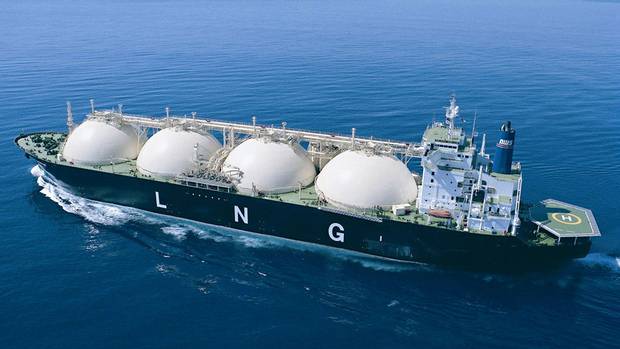Islamabad: The Ministry of Finance appears to have spent the entire cess collection from gas consumers to bridge the budget deficit and is reluctant to provide $300 million to the petroleum ministry for executing the $2 billion Gwadar liquefied natural gas (LNG) pipeline project, an official says.
This came despite the Ministry of Petroleum and Natural Resources having approached the finance ministry to seek the release of gas infrastructure development cess (GIDC) collection for spending on planned gas import projects.
The finance ministry instead suggested to borrow around Rs100 billion from commercial banks. Earlier, gas utilities were working on enhancing the capacity of their pipeline networks to create room for LNG transportation.
So far, Rs183.86 billion has been received from consumers in shape of GIDC, which was imposed in January 2012 to finance gas import projects. However, nothing has been left as the finance ministry has consumed the entire amount.
For the Gwadar LNG pipeline, the government is negotiating a commercial deal with a Chinese company for kicking off work by the end of March.
The company, China Petroleum Pipeline Bureau selected by the Chinese government, will provide 85% of financing whereas Pakistan will inject 15% equity into the project.
The company is already working on pipeline projects stretching over 8,000 km in different countries including Myanmar, Bangladesh, Russia and other nations. It has also laid pipelines from Turkmenistan to China.
However, the petroleum ministry is encountering trouble due to delay in release of $300 million as the project should be completed by the end of 2017.
“Owing to delay in financial assistance, we may not be able to finish work on the project by the stipulated time,” an official remarked. The finance ministry, according to the official, was of the view that the government was required to frame cess rules and before that it could not release the funds.
Now, the petroleum ministry has planned to send a summary to the Economic Coordination Committee (ECC) for the availability of necessary funds to finance the pipeline project.
According to officials, it is unfortunate that funds are available for metro bus projects but there is no money for pushing ahead with plans for gas import, which will contribute immensely to accelerating the pace of economic growth, which suffers a three-percentage-point loss every year due to energy shortages.
The Gwadar LNG pipeline is an alternative to the Iran-Pakistan gas pipeline project, which was stalled due to US sanctions on Tehran. The curbs have now been lifted and hopes arise that the project will be executed in the next two years.
Under the plan, the LNG pipeline will be laid from Gwadar to Nawabshah and a terminal will also be built at Gwadar port. The pipeline will be connected to the Iranian border at a cost of $200 million.
Engineering consultant ILF has put the total cost of the pipeline and terminal at around $2.5 billion because of a fall in steel and compressor prices.
“However, the Chinese company has offered to develop the project at a cost standing below $2 billion in the financial bid opened by Inter-State Gas Systems (ISGS),” a senior government official said, adding a price negotiation committee had been set up to push the cost further down.
However, the official cautioned that delay in the project would lead to an increase in the cost.
This is the first project under the China-Pakistan Economic Corridor for which technical and financial bids have been opened.
The Chinese firm will build the new terminal – a floating storage and re-gasification unit (FSRU) – which will be owned by ISGS. The terminal will have the capacity to handle 600 million cubic feet of imported LNG per day (mmcfd).
Read : ECC approves Gwadar-Nawabshah LNG Terminal and Pipeline Project






